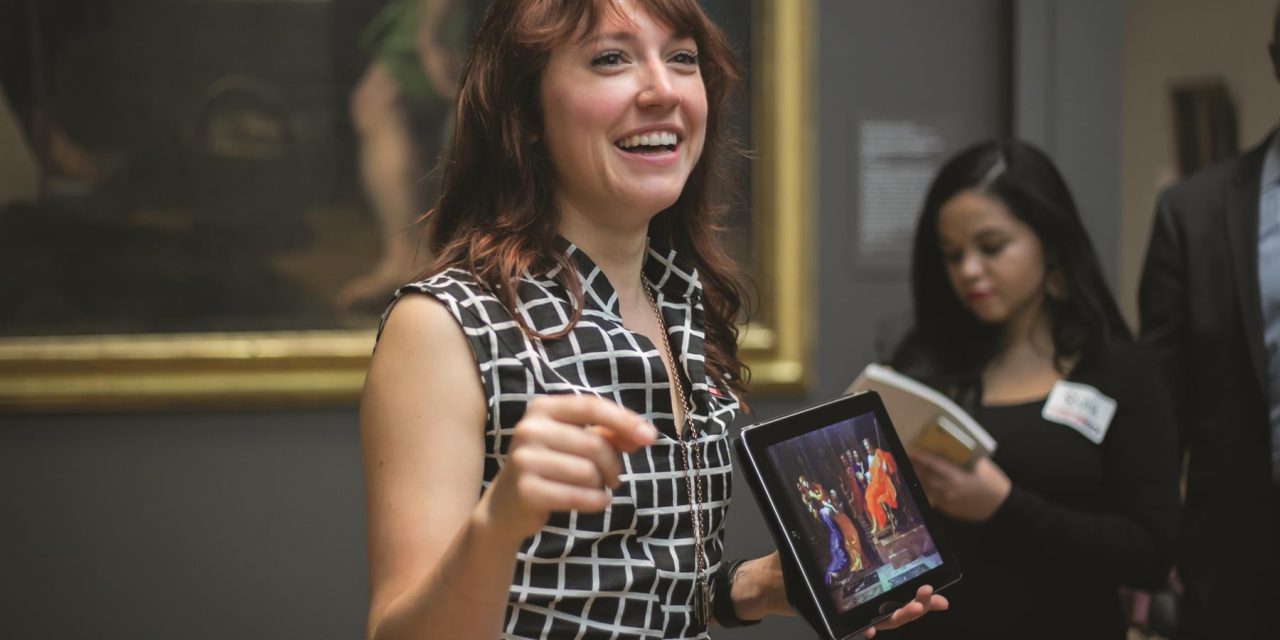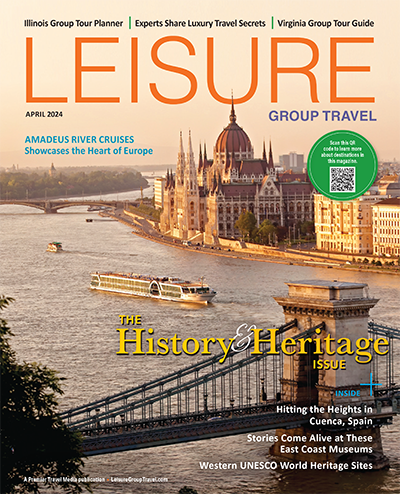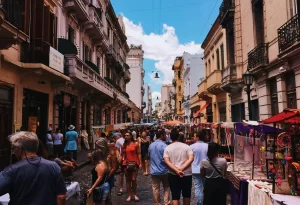I had the privilege of speaking to a group of docents-in-training – some experienced guides and some brand new to leading tours – at Glessner House Museum and help them become more comfortable developing their tour of the home. They had plenty of facts – from a 135+-page training material and notes taken during 15 hours of lectures. My job was to offer tour guide best practices and tips, interpretation techniques, and examples based on my real life experience.
Here are my 22 tour guide best practices:
- Make a timeline. Sorting key events and dates chronologically helps develop a better understanding of causes and effects, sequences, and historical or architectural context.
- Cheat sheets are a valuable resource. While a professional should not need notes for a presentation, sometimes tourists want to know something that is hard to commit to memory. Carry a page with quotes, number-rich data (statistics), metric conversions, special vocabulary, or names or dates that you may not always remember.
- Prepare a “Guide Bag.” The objects you want or may need on tour go inside. Name badge, reference material (cheat sheets, historic photos, timelines, maps, brochures), a small bottle of water, hard candy or throat lozenges, tissues, a flashlight or laser pointer, paper and pen, a snack, etc.
- “On time” is 15 minutes early. Show up well before your tour time so you may use the bathroom, stow your belongings, organize your papers, and feel relaxed (not rushed). Your employer or tour contact will appreciate knowing you are ready to begin on time!
- Make a good first impression. Dress in clean, neat clothes. Wear sensible shoes. Comb your hair. Smile. Stand up straight. Silence your phone.
- Start and end punctually! Adhere to the time frame specified. People who are on time do not want to wait for late comers. Going overtime may inconvenience the group or individuals who may have another appointment scheduled.
- Play well with other guides. Sometimes you cross paths and must avoid other guides when touring in limited spaces. Remember the Golden Rule: Treat others as you want to be treated!
- Tailor commentary to the group. Are they from your city, state or country? Do they love architecture or history? Why did they choose this tour? Ask a few questions, then show you care by customizing your commentary to their interests!
- Be organized. Presenting 101: introduce yourself and the topic, tell the group what they will see on the tour and how long it will take, give the tour, end with a conclusion and thank you.
- Talk about what people can see. Address what is in front of the group. If asked an “off topic” question, provide the information when there is an object connected to the topic in sight. Or speak with the guest individually at the end of the tour.
- Work the room (or scene) logically. Explain things top to bottom or left to right, not in a haphazard way that may get heads bobbing as if they were watching a tennis match!
- Be heard. Face the group. Enunciate words. Project your voice. Speak at a moderate pace with pauses to allow for processing information. Make eye contact to gauge understanding and interest. Use specific de-scriptive words (right/left, high/low, red/black) and/or a gesture to indicate what you are speaking about.
- Be understood. Be mindful of your word choice. Simple words are okay. Technical terms, slang and some common sports metaphors might not be easily understood by foreigners. Speak “their language,” which might mean giving metric equivalents to non-Americans.
- Remember to use visual cues. Is there a signature on a piece of art? Is there a dated cornerstone? Visible features on objects may help you and your guests remember details.
- Tell stories! A recitation of facts is certain to bore, but who doesn’t love a good story?
- Be safe. Alert the group to low overhangs, uneven pavement, and potentially slippery surfaces.
- Be passionate, authentic and share what you love. Look around you, what grabs your attention? If it interests you, the story you tell will probably engage the people on your tour.
- Lead by example. Cross at crosswalks and obey traffic signals. If it is prohibited to “go behind the ropes”, take photos, sit down, or touch objects—Don’t do it!
Say important things more than once. If it is significant, it bears repeating. Minds can drift off or be focused on other things, so say something twice or multiple times if it is essential. - Explain technical terms and concepts. Make everyone feel smart by clarifying things they may not be familiar with. What is quarter sawn oak? Why did the Arts and Crafts movement begin? What are the attributes of the Richardsonian Romanesque style?
- Be sensitive to cultural differences. We’ve all made assumptions based on personal experience. The parable of the blind men and the elephant is one of my favorite stories that illustrates the need to be open minded.
- If you do not know something, admit it. Then try to find the answer for that guest or your next tour!
- Interpreting (giving a tour) is a skill. You can always improve!
Donna Primas has been giving tours of the greater Chicago area in Spanish and English since 1983 and has been a docent at the Richardsonian Romanesque Glessner House Museum since 2012. To tour with Donna, contact primascopy@aol.com.







